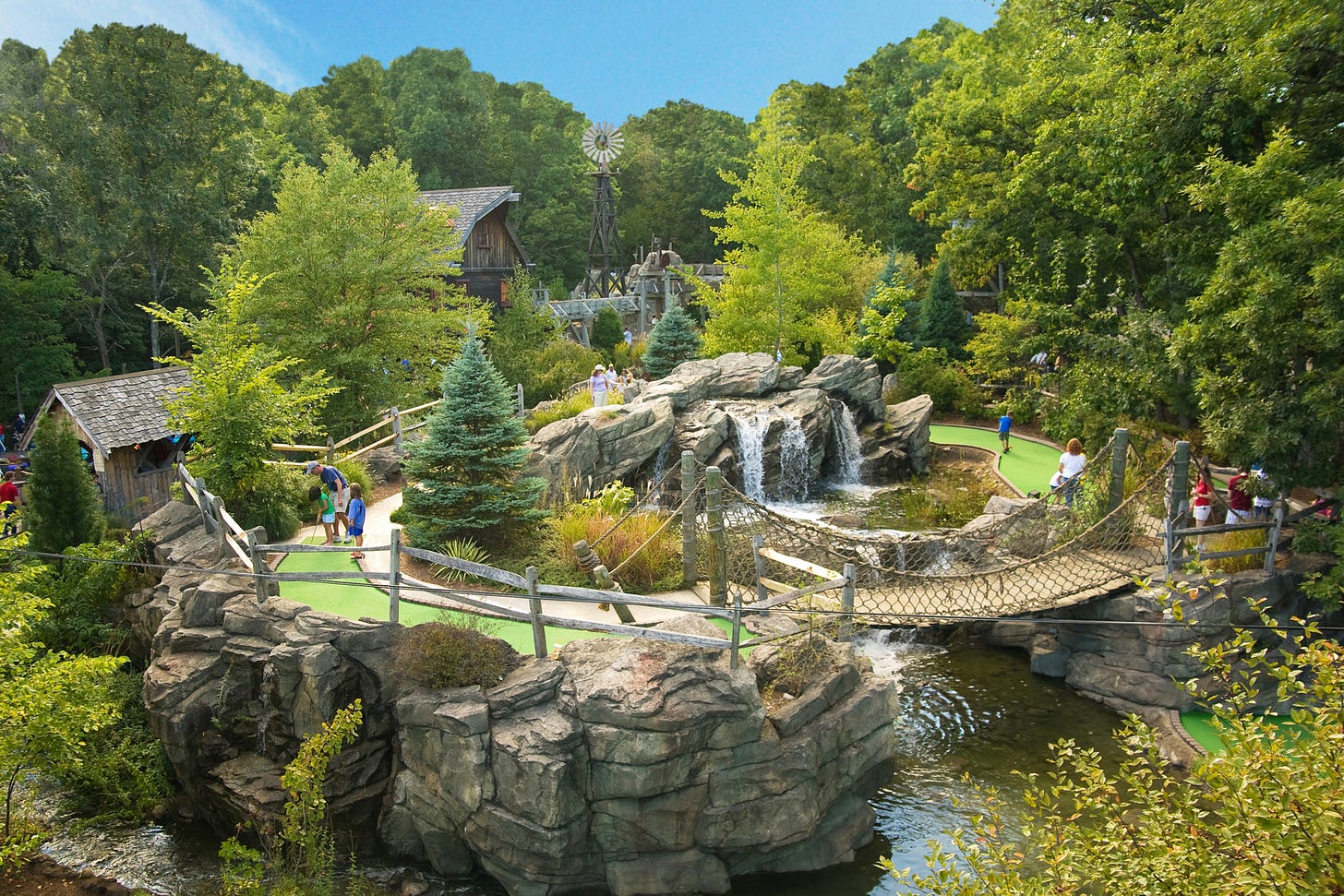The other week, I managed to catch Twisters, the unlikely sequel to the 1996 classic in which some ratchety storm chasers pursue increasingly deadly tornadoes across Oklahoma. While no sequel could compete with the original’s groundbreaking special effects and ludicrously stacked ensemble cast (Bill Paxton! Helen Hunt! Cary Elwes! Philip Seymour Hoffman! Lois Smith! Alan Ruck! Fucking Todd Field!) the filmmakers behind Twisters didn’t seem to understand the assignment. The majesty and terror of the tornadoes felt muted—marginalized by character stories that also felt half-baked and underwhelming. It was as if the filmmakers found the idea of making a big, dumb disaster blockbuster beneath them, and the end result is conspicuously lacking in joy. Altogether, the movie was a bleak reminder that blockbuster sequels should only be attempted if they can rekindle the joy of the original movie. Otherwise, why bother?
So, to compensate for the failures of Twisters, I want to take this week to release a long-brewing sequel to one of the most widely read stories in Mind The Moss history; a story that brought me a ton of joy during the process of writing and publishing it.
Back in the winter of 2022, I wrote about how golf courses can be opportune territory for unlikely hiking—and how daring to trespass on a golf course for a hike can be kind of a vague political statement about open space and land access. As much as I liked seeing the piece find a large audience (my friend and fellow student newspaper alum Eddie Kim wrote a good story about the story for MEL Magazine), I couldn’t help but wonder, “What if you could enjoy a hike across a golf course without the exposure of trespassing?” And then it hit me, like a 27-inch putter thrown by an angry 6 year-old who failed to execute a hole-in-one. There is, in fact, another genre of golf course that can deliver a recreational experience with surprising similarities to going for a hike.
It’s just a little…smaller.
There are two kinds of mini golf courses. There are the sad and lazy courses in which someone has just laid out a handful of irregularly-shaped putting greens. And then there are the adventure-style mini golf courses. On these courses, you don’t just play 18 holes—you go on a journey through a leafy, rocky golfscape that was intentionally designed to charm and intimidate. Sure, some people try to keep score when playing adventure-style mini golf, but on these courses, the competitive metrics are generally backburner concerns. The top priorities here are fun, discovery, and at times, savoring what’s around you; not unlike going for a hike in the backcountry or the city. But more specifically, there are three ways in which playing a round of adventure-style mini golf can activate the same neurons that are buzzing when you’re out on a beautiful hike.
First, let’s remember what hiking is, on an elemental level. It’s the process of walking through a sequence of environments on foot and investigating the gems and oddities of each one. The best adventure-style mini golf courses are meant to deliver a similar experience. Take Kimball Farm in Westford, MA. When you pick up your balls and your putters at the little clubhouse, you’re immediately greeted by a literal juncture with a trail signpost, which forces you to make a hard decision. Do you follow the leftward sign and play the “Forbidden Mine” course? Or do you veer right and try your hand at the “Waterfall Run” course? A lot of mini-golf courses are so big that they contain 36 holes, which are organized into two curated routes. You can play one or both. When my friend Kelley and I visited Kimball Farm on a steaming afternoon in July, we went with the Waterfall Run course, assuming that it might yield some nice cooling mist.
We weren’t wrong about this, as the course took us past big spattering cascades that spilled from rock formations into little pools and rivers weaving alongside the putting greens. But in the same way that some hiking trails can deliver thorns with the honey locust, we soon found ourselves atop one of those rock formations, waiting in line to take our turn on a hole that involved hitting the ball down a chute to a secondary lower level of the green, further down the rock slope. We stood there, baking in the sun, for around 10 minutes. Even with a fresh coat of sunblock, this was a level of exposure I hadn’t expected, and when we reached Hole 18, I was ready for a birch beer and a nap.
Still, the diverse environments that we experienced in this golfscape were dazzling in their whimsy. And a proper adventure-style mini golf course is going to offer this as a foundation. So what’s the next criterion by which we appraise the “adventure” quality of a course? It’s the physical challenges that you find on the course; the obstacles that you have to get past, with skill and luck. Think of the last time you went for a hike and ran into something that got your heart racing and your dopamine surging, like a long, twisty rock staircase, a sketchy river crossing on loose stones, or a set of iron rungs mounted into a cliffside. Top notch mini golf courses offer similar challenges that pose risks for your ball. Sometimes they can simply add a layer of difficulty to the hole, but in other cases, failing to surmount an obstacle can kill your game early.
Here’s what I’m talking about. Let’s say you’re in Vermont’s northern Green Mountains and you swing by Duxbury for some putting at the admirably-named Lots-O-Balls Mini Golf. On one hole, you’ll have to knock your ball up a narrow ramp that leads into the open door of a replica outhouse. With enough aim and power, your ball ascends the ramp, disappears into the outhouse hole, and emerges on a green on the other side through a much smaller hole in the side of the structure. If you nail the shot, good on you. If you miss the ramp, you keep trying; just like I had to make three attempts to scramble my way up and into a chimney cave on Maine’s Tumbledown Mountain.
But suppose you’re playing adventure golf at the Pirate’s Cove course in Old Orchard Beach. Pirate’s Cove courses are buccaneer-themed and heavy on water features, and not all of the putting greens have barriers between the astroturf and the water. In fact, you’ll sometimes have to shoot your ball over the water, via ski jump-esque ramps. If you knock your ball into the water with a poorly aimed shot, that might be the last you see of it. I remember one hole that involved putting the ball through a cave with a river running through it. I can still hear that splash. I still feel that sting of disappointment.
All of which is an elaborate way of saying, you have to keep your wits about you when playing adventure-style mini golf. Because the best courses are going to demand your focus and your confidence. But that’s not all that distinguishes the legendary mini golf courses from the mediocre ones. Behind everything—the golfscape environments and the rigors within—there’s ideally going to be a sense of escalation. I’ve played on mini golf courses that seemed to run out of creative gas by the last hole, offering a bevy of scenic curiosities and challenges, only to conclude with something uninspired like a putting green where you guide the ball into an infinity hole that leads back to the ball storage area in the clubhouse. This is a travesty. The final holes on an adventure-style mini golf course should evoke the feeling of summiting; of being on top of the world.
A few weeks ago, the promise of a superlative hole inspired me to make a pit stop at Chuckster’s, a storied adventure golf course near the Hooksett, New Hampshire toll booths on I-93. On top of offering two different courses, Chuckster’s claims to have the longest mini golf hole in the world, and you know what? I believe them. The long hole is a winding serpentine thing that descends a hillside for more than 200 feet. But there’s another epic hole near this one. And it involves some elevation gain. You start by climbing the stairs of a wooden fire tower, which brings to mind the tower on top of Mount Cardigan. But at the top of this fire tower, you’ll find a small putting green that contains a hole. And that hole is just the beginning. Once your ball enters this hole, it plunges through a pipe back down to the ground. You descend a staircase on the other side of the fire tower, meet your ball on a lower putting green, and send it home to the true concluding hole. And from there, it’s basically time to head home.
Unfortunately, for those who can’t resist the flowering and rippling enchantment of an inspired mini golf course, the seasonal window for this balls-to-the-wall (as in, the wall of a cave) adventure is going to close in just a month or two! The golf courses in coastal vacation enclaves like Cape Cod and Hampton Beach will be the first to go into hibernation, while the ones in leaf peering territory should stay open until late September or October. So if you miss out on parking permits for trailheads at Mount Katahdin during the end of the climbing window (also late September into October), consider another kind of outdoor adventure. The one with balls and junior-size clubs and a giant ice cream cone at the end of the trail. As you would with Mount Katahdin, choose your golf course path thoughtfully. Before long, it will be covered with snow.
Or ice.
Or soggy leaves.
You get the idea.
Those of you who’ve been reading Mind The Moss for awhile know that I only mention hiking gear in the most selective sense (because the idea that you need lots of pricey gear to go hiking can be a deterrent to hiking, and it’s also not true.) But I do think this story in The Verge about new biomechanical hiking pants from Arc’teryx is worthy of mentioning. As reported by Andrew Liszewski, the new pants feature an exoskeleton which is powered by a lightweight electric motor at the knee. And the conceit is that when you activate this puppy, it will make you “feel 30 pounds lighter.” I can hear the muffled thumping of Emma “Grandma” Gatewood and Earl Shaffer rolling around in their graves, and I can’t decide whether I’m appalled or entranced by these pants. All I know is that the $4,500 price tag exceeds my budget, and I’m prepared to exploit my press credentials unscrupulously if it means getting access to a pair of pants to test.
Oh, and speaking of innovation, I found a lot to chew on in this New York Times story from Lauren Joseph, which highlights vegetable-forward recipes for grilling outdoors this summer (as opposed to the usual bevy of flame-seared meats.) We do not have access to a grill at my apartment, and the spare public grills at Franklin Park are just too far away from us to comfortably hauling charcoal, lighter fluid, and ingedients to. So if you ae blessed enough to have a grill in your vicinity, try these recipes. For me.







Crazy pants! I can’t wait to spot them on the trail! Haha